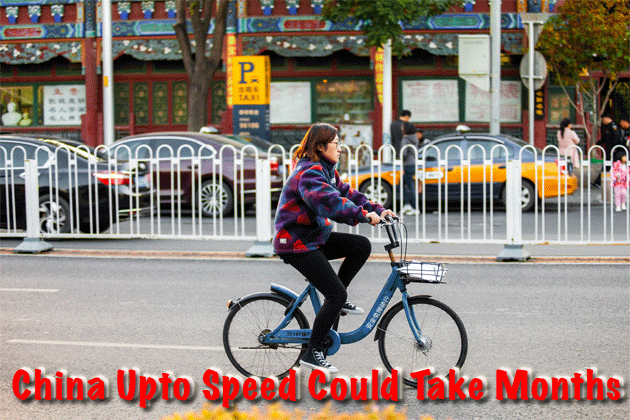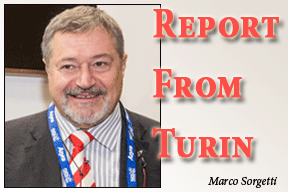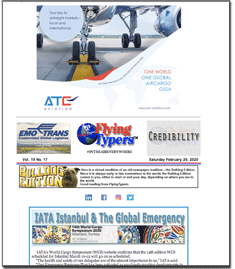 |
Right now as we enter the
second week of March 2020, world focus continues on emerging new locations stricken by COVID-19.
Back in China, it is now post Lunar New
Year.
But in the factories where exports are created,
especially in Wuhan, part of Hubei Province the industrial heart of the
country where the virus began, the lights are on, but people in that stricken
area are slow-walking rather than rushing back to work.
The ripple effect of the China pandemic
is also felt in places like Vietnam where all schools are closed from
kindergarten through college and have been for the past month.
Professor Christopher Balding of Fulbright
University, who was in China for over a decade gathering analytics and
tracking progress as that country emerged as a world economic power, and
is now based in Ho Chi Minh City (Saigon) describes the return to work
in Wuhan and elsewhere in China as a “trickle, but not any significant
move back.”
Speaking to the YouTube program “War
Room Pandemic”, Balding predicted the back to work ramp up
of China’s workforce “at the current pace means it could take
six weeks to two months before return to any kind of normal activities.
“We track morning and evening rush
hours to and from work via the internet, and note volumes are trending
up a little bit,” Balding said.
“But daytime traffic is virtually
non-existent as is subway travel in the (Wuhan) area.
“Also,” Balding pointed up,
“we are not seeing movement of the enormous workforce that went
home to locations all over China for Lunar New Year, back to cities where
they have jobs in the factories.
“China today is nowhere near the level
where you could say OK there has been a serious restart of economic activities.”
Skies remained clear last week above a country
where 80% of power is generated by coal, creating the worst pollution
on earth, seemingly the one positive to report.
“Coal consumption is at 40% as compared
to normal,” Christopher Balding said.
“One area of activity has been an
increase in truck traffic where more than 50% of truckers are back and
in fact moving more cargo than other sectors.
“But we are not seeing the level of
logistics and long-haul trucking movement that you would expect to see
normally.”
Big back up at the ports of both import
and export goods with ships waiting to be unloaded is the significant
word up here.
While the story of COVID-19 continues worldwide,
so does the brilliance and tenacity of the Chinese people who have shut
down a part of their country as big as France, with 80 million people
quarantined.
The authoritarian dictatorship in China
may have been slow out of the gate and secretive, allowing this horror
to spread too far too fast, but now with everybody in the fight coupled
with aggressive containment procedures seems to be having the effect of
slowing the virus down, according to reports.
A template made in China has been developed
for containing this menace, wherever it pops up in a cluster, including
Milan, Seattle and elsewhere.
 The
situation is not easy. We are close to the peak of the infections.
Measures have been adopted to contain the proliferation, but it is
difficult to have Italians to spontaneously abide by stringent rules.
Anyway the public starts to understand that they have to modify their
habits and I can tell by the road traffic that most are limiting their
commuting habits. Let us hope for the best and see if the curve starts
declining in the next 5 - 7 days. The
situation is not easy. We are close to the peak of the infections.
Measures have been adopted to contain the proliferation, but it is
difficult to have Italians to spontaneously abide by stringent rules.
Anyway the public starts to understand that they have to modify their
habits and I can tell by the road traffic that most are limiting their
commuting habits. Let us hope for the best and see if the curve starts
declining in the next 5 - 7 days. |
Winners & Losers
Right now various high-profile industries
are being impacted by COVID-19 in the U.S.
Severe and sudden drop off in business no
doubt will force the government to pick winners and losers.
As example, it is understood that the U.S.
cannot allow Boeing or the airlines to go down.
Impacted carriers with airplanes parked
and schedules disrupted for any length of time will force the U.S. Government
to get creative and find a way to extend a lifeline.
Cruise ships as purely a leisure industry
are another matter and most probably will not get a sympathetic ear as
losses mount and people stay home.
Best short-term view is the continued effort
to identify and define the threat.
Based on past viral health attacks, with
the threat of COVID-19 moving forward, reasoning is that prevention through
a policy of separation and lock down confinement will get a handle on
the outbreak.
According to several reports, as the weather
warms up, the spread of the virus should diminish.
The unexpected, sudden and irrevocable change
in everyday life that COVID-19 has brought to the world, has also been
met with a certain amount of reservation, even disbelief.
On Monday Elon Musk, the CEO of Tesla automobiles
said: “The coronavirus panic is dumb.”
Microsoft founder Bill Gates on Monday was
less dismissive, more safety first, stating:
“In the past week, COVID-19 has started
to behave a lot like the once-in-a-century pathogen we've been worried
about," writes Gates.
“I hope it's not that bad, but we
should assume that it will be until we know otherwise,” Bill Gates
declared.
Some Airline News:
In Seattle, Washington, home of Boeing
aircraft and several high-tech organizations including Microsoft, Facebook
and Google, cases of COVID-19 have hobbled the second greatest tech city
in the world. Schools are closed, officials are advising people not to
go to work but to tele-commute.
Over at Boeing, the prime economic driver
in that city, news that carriers are slashing services follows no new
aircraft sales for January. Boeing, selling no new aircraft for a month,
was matched by Airbus saying Friday it sold no new aircraft In February.
Meanwhile, Lufthansa said that it is slashing
half or about 7,000 of its flights in March, while IATA predicted that
the global airline industry could take a USD$113 billion hit in sales
or 19% of their business if the coronavirus is not contained soon.
Geoffrey
|




 Vol.
19 No. 17
Vol.
19 No. 17